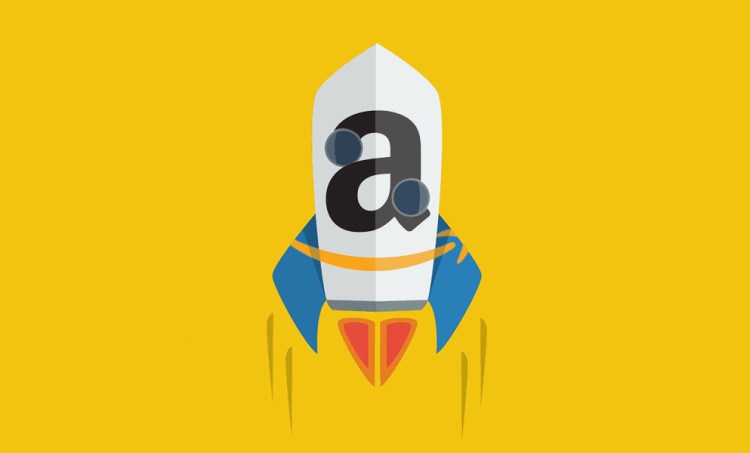Connect with execs from The New York Times, TIME, Dotdash Meredith and many more
‘The numbers were astronomical’: Streamers see the sales on Amazon Live, but brands are still hesitant

Justin Moore and his wife, April, have only been selling products through Amazon Live for a few months, but it has already completely changed the way they do business.
The veteran YouTubers, who had been selling things online for years, were recruited by Amazon in late November to start using the growing video channel, and soon were pulling in tens of thousands of dollars of revenue on their best days. The Moores now field dozens of requests every week, many from curious ad agencies, for guidance on how Amazon Live works. The requests have been plentiful enough that the couple now offers Amazon Live show hosting services.
“The numbers were astronomical,” Justin Moore said, saying that the return on investment was clear the first time they used Live, around Black Friday and Cyber Monday last year. He declined to give specific figures but claims that this year’s Prime Day sales surpassed last year’s Black Friday sales by 52%.
The Moores’ experience may have piqued agency and brand interest in Amazon Live, but it hasn’t drawn a ton of adoption so far. Even as more social media platforms add live shopping to their roster of features and Amazon makes new investments in its Live product, most brands are still hesitant to try it out.
Many brands aren’t sure they want to go beyond traditional ads — or the additional hassle of making a video or hiring a creator. When brands do get into live streaming, cementing a preferred time slot in the Amazon Live lineup can be a long climb up the Amazon rankings.
“Brands know something is there, but they aren’t running to sign up,” said Eddie Segev, studio manager at Top Rated Studio, which creates videos for Amazon sellers and hosts live streams in its studio.
Amazon Live launched in 2016, but it wasn’t until recently that Amazon began making more investments in the channel. In February of 2019, Amazon launched its Live Creator app, which allows users to sell via live stream directly from their phone. Then, in July 2020, Amazon expanded the app to include influencers who are part of the Amazon Influencer Program. An Amazon spokesperson declined to give numbers on how many people are using Live but did say that there were over 1,200 live stream shows during Prime Day 2020.
Today, there are about a dozen live streams happening at one time on a dedicated Amazon Live homepage, with one stream as the “feature” video on the page. These video times and placements are determined by Amazon’s ranking system, which includes three levels: “Rising Star,” “Insider,” and “A-List.” Each level offers progressively better video placements on the Amazon Live page. To ‘level up’, sellers must consistently create content to amass a following and drive sales, similar to YouTube streamers looking to build their subscriber base.
Users must either be a brand registered seller, a U.S. vendor with an approved Amazon store, or an Amazon influencer with an active Amazon storefront to use the Creator app and stream.
But rather than an easy path to incremental revenue, it takes time and effort for brands to see returns. Amazon recommends streaming for at least an hour once an account is approved.
“For Amazon Live to materially impact sales on, say, Prime Day, sellers would need to have been using it consistently for months so they’d have the status necessary for winning a highly visible location,” said Katie Capka, inbound marketing manager at Kaspien, which does Amazon marketing, in an email.
According to a January 2021 survey of U.S. creators by Mavrck, 85% said they use Instagram the most often to live stream, followed by Facebook (7%), and TikTok (4%). Less than 2% of respondents said Amazon Live was their main live stream platform.
For now, many brands would rather use static photos and traditional ad placements, instead of making a video or hiring someone to host a live stream, Segev said.
Melissa Ardavany, director of marketplace client services at Blue Wheel, echoes this. “Live is in the ‘test and learn’ phase,” she said, “It’s also not as mature as the ad placements clients are used to.”
Brands should instead look at Live as a long-term investment, especially if they want to be competitive for the holiday shopping season, or next Prime Day. “I understand that some brands see it as a new format,” said Moore. “Even so, being able to directly attribute revenue from a stream — that’s huge.”
More in Marketing

In Graphic Detail: Inside the state of the creator economy industrial complex
The creator economy might have started out as an alternative to traditional media, but is becoming more and more like it as it professionalizes.

Shopify has quietly set boundaries for ‘buy-for-me’ AI bots on merchant sites
The change comes at a time when major retailers like Amazon and Walmart are leaning into agentic AI.

WTF is ‘Google Zero’?
The era of “Google Zero” — industry shorthand for a world where Google keeps users inside its own walls — is here.








